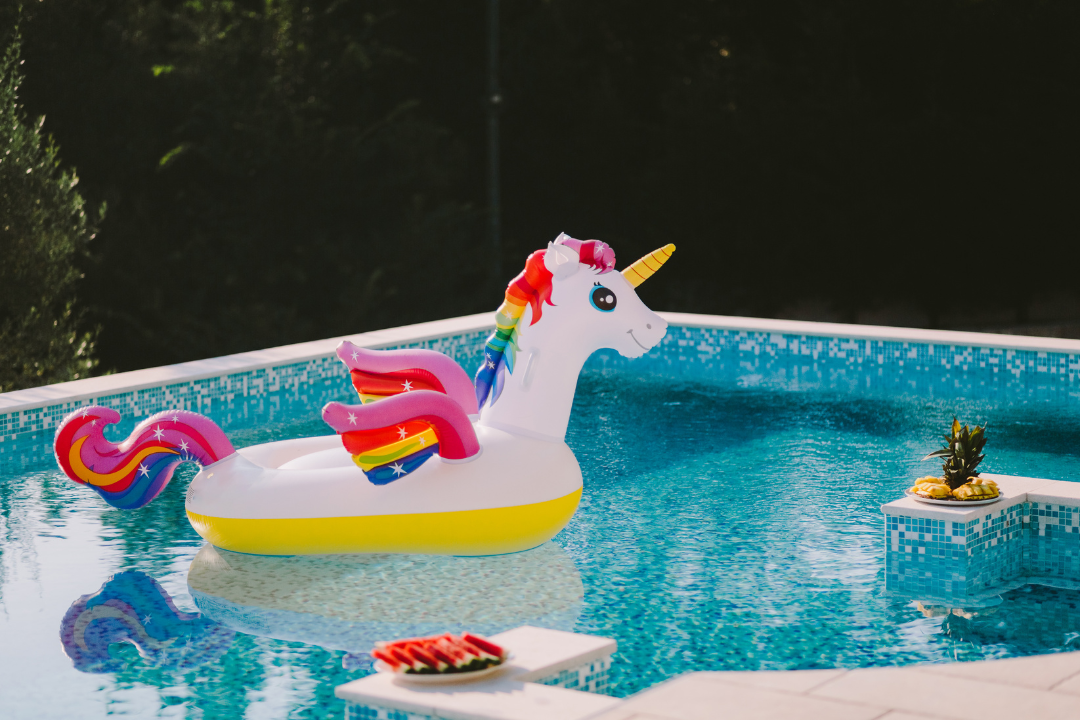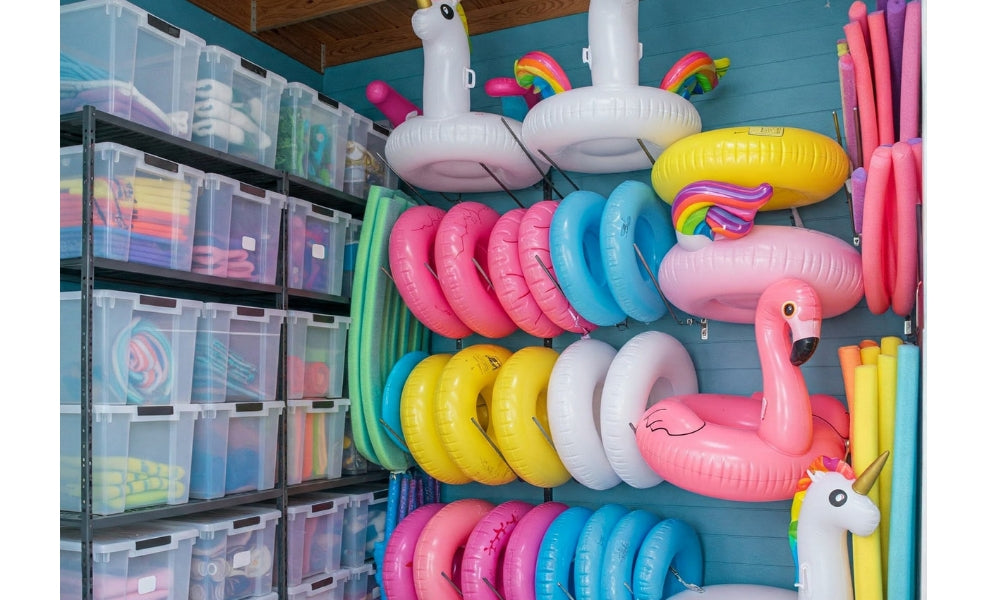Imagine the following scenario: you are excited to enjoy a day in the pool after months of working hard and studying, but you realize that your favorite float is deflated, humiliated, and you are no longer able to use it.
Deflation is a natural process of inflatables; you only have to know how to deal with it. If your summer toy gets empty too fast, it might suggest a problem. So, if you wonder, "why do pool floats deflate?" we've got you covered. Here, we'll discuss how to identify deflation's causes and some good practices to avoid them.

Top 7 Reasons Why Pool Floats Deflate
There are many reasons pool floats deflate; this process can happen with inflatables of all sizes. The most common causes are:
Temperature-induced Pressure Changes
It's the most common cause and natural too. Pool inflatables, in general, get wilt when the temperature drops. Remember, the air during the day is denser (and needs more space) than at night (when particles are calmer). It means your toy will lose pressure during the day, no matter what happens or what you do! Let me share some specific information about pool floats: they are designed so that for every 10-degree drop in air temperature, the inflatable loses around 1 PSI of pressure.
To resolve this, take a bump and carefully inflate the toy before a pool party. Follow the procedure, and other actions are not required.
But does heat cause deflation? Interestingly, it can, but indirectly. Exposure to high heat followed by sudden cooling, or overinflation weakening the material, can lead to air loss through weak spots or seams. So, while the direct effect of heat is expansion, its indirect effects can indeed cause deflation.

Holes and Tears
Unfortunately, accidents happen, and misapplication is a reality. But don't panic. Learn how to patch a pool float and continue enjoying your holiday.
Even the smallest puncture can lead to a significant loss of air over time. Fortunately, most minor damages can be repaired with patch kits designed for inflatables, allowing you to extend the life of your pool float.

Scratched Wear
Often, chemicals used to treat pool water can damage fabrics and cause wear – it is the leading motivation you should be concerned about how to keep your pool floats clean. The solution for the wear of the wall's float is similar to holes and tears.
"Why do pool floats deflate?" Well, there isn't only one reason, as you can see.

UV Damage
Just as UV rays can harm our skin, they can also damage the materials of pool floats, leading to material degradation. But why do inflatables deflate in the sun? Prolonged exposure to direct sunlight can weaken the fabric or plastic, making it brittle and more likely to develop cracks or holes. Storing your floats in a shaded area or covering them when not in use can protect them from UV damage.

Valve Problems
Valve issues are a common culprit behind inflatable pool deflation. These problems can range from minor leaks to complete malfunction, affecting the pool's ability to retain air. Leaks often occur when the valve seal becomes compromised, either through dirt and debris buildup or wear and tear. Malfunctioning valves may fail to close properly, allowing air to escape even when the pool seems fully inflated.
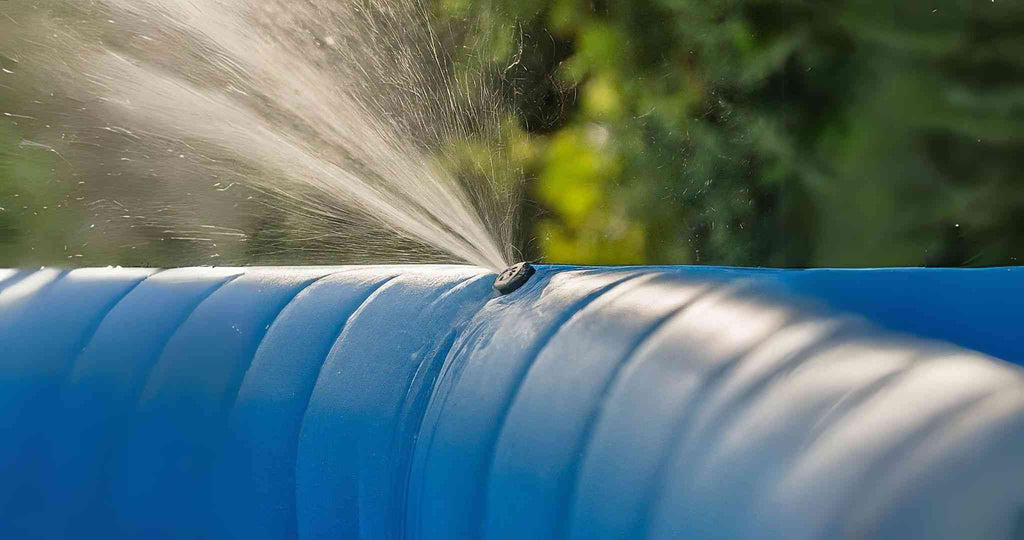
Over-Inflation
Inflating a pool float too much can stretch the material beyond its intended capacity, putting undue stress on seams and valves. This not only increases the risk of immediate tears or leaks but can also weaken the structure of the float, making it more prone to deflation over time. Following the manufacturer's guidelines for inflation levels is key to avoiding over-inflation.
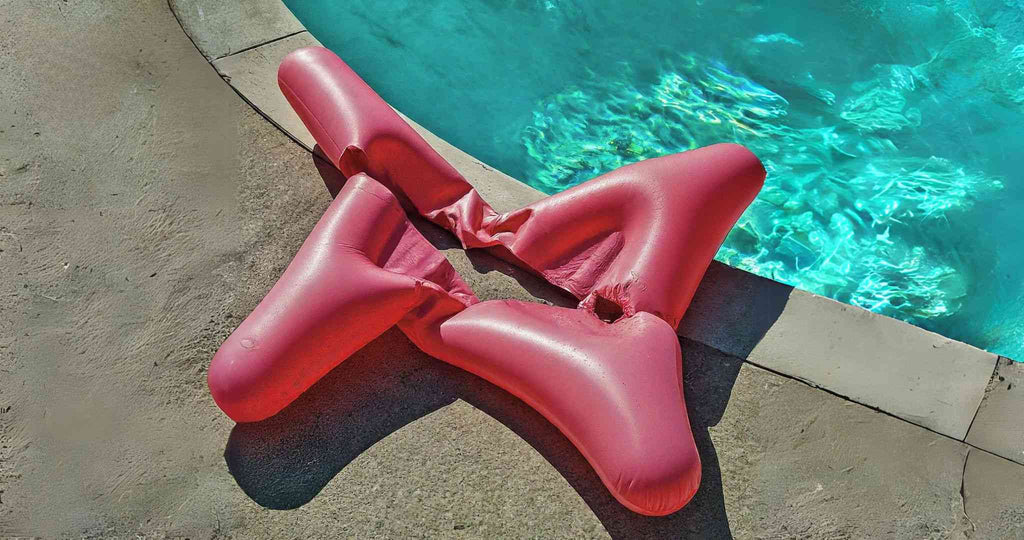
Aging
Why do inflatables deflate so quickly? Over time, even the best-cared-for pool floats will show signs of wear and tear. Materials can lose their flexibility, valves may become less effective, and seams weaken, leading to deflation. While normal, this process can be slowed with proper care, maintenance, and storage practices.
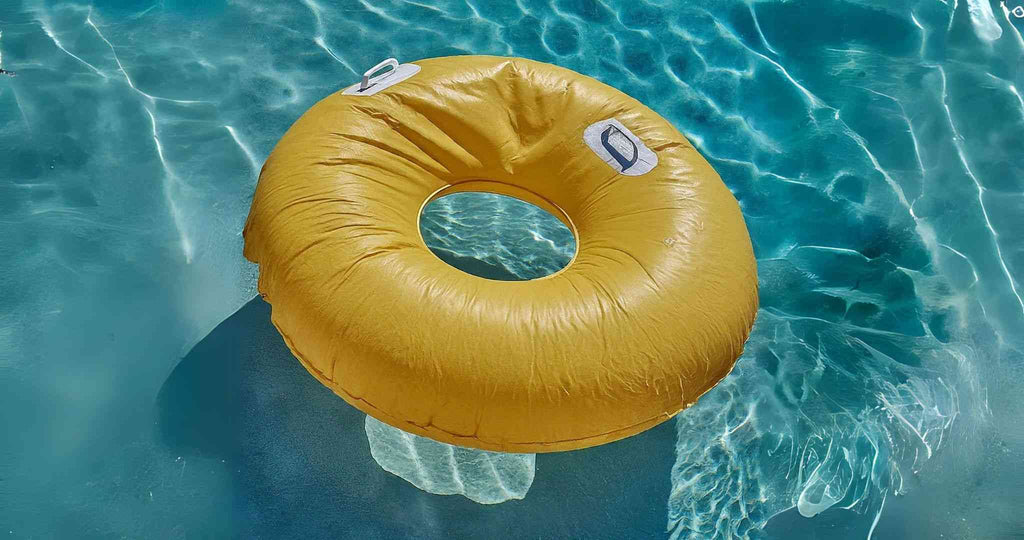
6 Tips To Fix a Deflated Pool or a Pool Float
Inflatables aren't disposable. With the following tips, you can fix your inflatable pool or pool floats very efficiently. We've got you covered if your inflatable pool keeps deflating and you need help finding the answers. Let's see some good advice for this process.
Tip #1: Find The Leak
First, examine your inflatable pool or pool float looking for a hole. If you don't see anything wrong after an inspection, inflate it until you hear air coming out. Nothing yet? Submerge the pool float in clean water and look for tiny bubbles indicating where the leak is.

Tip #2: Buy The Appropriate Repair Tool Kit
Make sure your inflatable is made of PVC, rubber, or other material. These details can usually be obtained from the manufacturer – check out their website or even contact them by email or phone. Now you have this detail, choose a fitting repair tool kit at Amazon or any reliable marketplace. Some people simplify the process and use double-sided tape to patch the hole. Always clean the float surface before patching the hole for the best results.

Tip #3: Waiting Before Use
After patching a hole in a toy, wait a while before using it. Wait a couple of hours or even a longer period before playing. Patches usually need some time to dry.

Tip #4: Test the Repair
After allowing the patch to dry thoroughly, testing the repair before full use is crucial. Gently inflate the pool float to the recommended pressure and leave it inflated for at least 24 hours in a shaded area. This test will help ensure the patch holds, and the leak is effectively sealed. If the float deflates significantly during this period, inspect the repair and consider applying a secondary patch or consulting a professional.
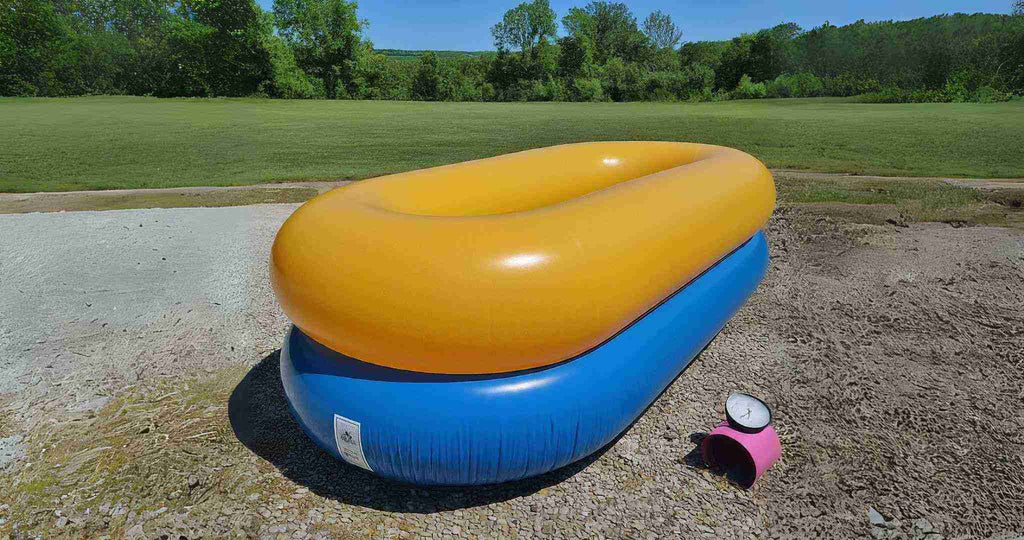
Tip #5: Apply a Protective Layer
A protective layer can provide an additional defence against future damage for areas prone to frequent leaks or wear. Products like silicone sealant or liquid rubber can be used to reinforce patched areas or vulnerable spots on your inflatable. Ensure the product is compatible with your float’s material and apply according to the manufacturer’s instructions, allowing ample drying time.

Tip #6: Regular Maintenance Checks
Establish a routine for inspecting and maintaining inflatables, especially before and after significant use periods. Check for any signs of wear, weak seams, or potential leak spots, even if they're not currently leaking. Early detection of minor issues can prevent them from becoming major problems. Additionally, cleaning your inflatable regularly with mild soap and water can remove debris and chemicals that may degrade the material over time.

How To Take Care of Your Pool Floats: Best Practices
Why do pool floats deflate? We already know it probably means that it has a hole in the wall of the inflatable. Let's certify that your buddy will last many years, making holidays and weekends memorable.
- Wash and dry pool floaties: Water and soap are the best way to keep your pool floats clean. So, you should create the habit of cleaning them after the day's use and before putting them away.
- Choose the correct storage space: Select a dry space and use airtight containers to protect the toys. Learn how to store pool floats, and they will serve you longer!
- Learn how to deflate and blow up inflatables with care: Do you prefer to use an electric pump, an air compressor, or even a manual pump? No matter, but always be prudent. Never force the deflate process and learn how to blow up inflatables properly – or you'll exploit them.
- Keep pool floats out of the sun when possible: We all love the sun. But when you, your friends, and your family aren't using the inflatable, please, keep it in the shadow. This simple care might extend the lifespan of the inflatable.
- Use Protective Covers: If you store inflatables outdoors, covers can safeguard them against weather and UV damage and minimize the chances of punctures from outdoor debris.
Final Thoughts
The worst comeback to the questions "why do pool floats deflate?" or "why is my inflatable pool deflating" is "because there is a hole in it!". Perhaps this situation has an excellent solution – to fix it with a special repair toy kit. Enjoy the pool!
